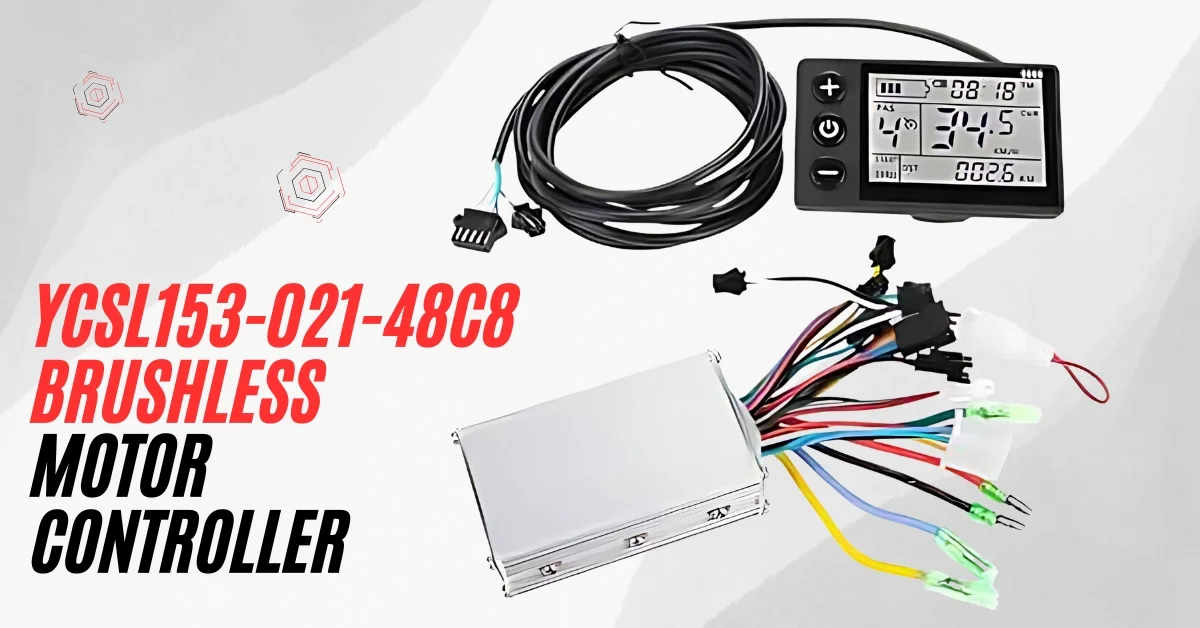Have you ever wondered why modern devices like electric vehicles, drones, and advanced home appliances perform so efficiently? The secret often lies in their motors. Brushless DC (BLDC) motors are revolutionizing the way machines operate, offering enhanced efficiency, precision, and durability. This article will explore the fascinating world of YCSL153-021-48C8 Brushless Motor Controller motors and their controllers, breaking down their structure, working principles, applications, and much more.
Understanding BLDC Motors
Basic Structure and Functioning
A BLDC motor consists of three primary components:
- Stator: The stationary part containing coils of wire.
- Rotor: The rotating component fitted with permanent magnets.
- Electronic Commutation System: Replaces the mechanical brushes found in traditional motors, using electronic sensors instead.
Key Characteristics
- High efficiency and energy savings.
- Low operational noise.
- Superior thermal management due to reduced friction.
Unlike brushed motors, BLDC motors rely on electronic commutation, where sensors detect the rotor’s position to control current flow effectively.
How BLDC Motors Work
Principles of Operation
BLDC motors work by leveraging the interaction between the stator’s electromagnetic fields and the rotor’s permanent magnets. When current flows through the stator windings, it generates a magnetic field that interacts with the rotor, causing it to spin.
Commutation Methods
- Trapezoidal Commutation: Commonly used, simpler to implement, but can produce torque ripple.
- Sinusoidal Commutation: Smoother operation and better performance, especially at lower speeds.
Additionally, pulse-width modulation (PWM) is used to regulate the motor’s speed and efficiency by controlling the power delivered to the motor.
Components of a BLDC Motor Controller
To control a BLDC motor, a specialized controller is essential. Key components include:
- Microcontroller: Processes inputs and executes control algorithms.
- Gate Drivers: Manage the high-power switches (e.g., MOSFETs or IGBTs).
- Feedback Systems: Use Hall sensors or back-EMF detection to track rotor position.
- Power Stage: Includes transistors that direct current to the motor phases.
The controller acts as the brain of the motor system, ensuring smooth operation and precise control over speed and torque.
Also Read: Understanding 1979 Suzuki GS750 Vacuum Line Routing
Designing a BLDC Motor Controller
Circuit Design Basics
- Use a three-phase configuration for the stator coils.
- Employ half-bridge or full-bridge circuits for efficient current switching.
Control Techniques
- Closed-loop Control: Continuously monitors and adjusts performance based on feedback.
- Open-loop Control: Simpler, but less precise and suited for basic applications.
Challenges in Controller Design
- Ensuring rotor positioning accuracy.
- Balancing switching frequencies to minimize power loss.
- Choosing between integrated ICs and discrete components for cost and flexibility.
Applications of BLDC Motors
Electric Vehicles (EVs)
- BLDC motors play a critical role in EVs due to their high torque and energy efficiency.
Drones and Robotics
- Compact and lightweight, they enable precise motion control in drones and robots.
Industrial Automation
- Widely used in conveyor belts, CNC machines, and other automated systems.
Home Appliances
- From fans to washing machines, BLDC motors improve energy efficiency and durability.
Advantages and Limitations
Advantages
- High Efficiency: Reduced energy consumption compared to brushed motors.
- Durability: Fewer mechanical parts result in lower wear and tear.
- Precise Control: Suitable for applications requiring speed and torque precision.
Limitations
- Higher Cost: Initial costs can be prohibitive compared to brushed motors.
- Complex Design: Requires advanced knowledge for controller development.
Emerging Trends in BLDC Technology
- Integration of AI: Adaptive control algorithms optimize motor performance.
- Advanced Materials: Gallium Nitride (GaN) and Silicon Carbide (SiC) for improved power density.
- Renewable Energy: Increased use in wind turbines and solar tracking systems.
How to Choose the Right BLDC Motor and Controller
- Application Requirements: Determine speed, torque, and power needs.
- Cost Considerations: Balance between upfront cost and long-term savings.
- Specific Use Cases: Opt for pre-configured solutions for common applications or custom designs for specialized needs.
Future Outlook
BLDC motors are at the forefront of sustainable and efficient technology. With ongoing advancements, their adoption is expected to grow in industries ranging from transportation to renewable energy. As costs decrease and technology matures, BLDC motors will likely become even more ubiquitous in our daily lives.
Conclusion
Brushless DC motors are transforming industries with their superior performance and versatility. From electric vehicles to drones, they’re powering innovations that make our lives better. Whether you’re an engineer, hobbyist, or industry professional, understanding BLDC technology is crucial to harnessing its full potential.
FAQs About YCSL153-021-48C8 Brushless Motor Controller
What is the main difference between a BLDC motor and a brushed motor?
BLDC motors use electronic commutation instead of mechanical brushes, making them more efficient and durable.
Why are BLDC motors preferred for electric vehicles?
They offer high efficiency, low maintenance, and precise torque control, making them ideal for EVs.
Can BLDC motors operate without a controller?
No, a controller is essential for regulating speed, torque, and direction in a BLDC motor.
What are Hall sensors used for in BLDC motors?
Hall sensors detect the rotor’s position to ensure accurate electronic commutation.
Are BLDC motors suitable for high-power applications?
Yes, BLDC motors can handle high power efficiently, especially with advanced materials like GaN and SiC.



